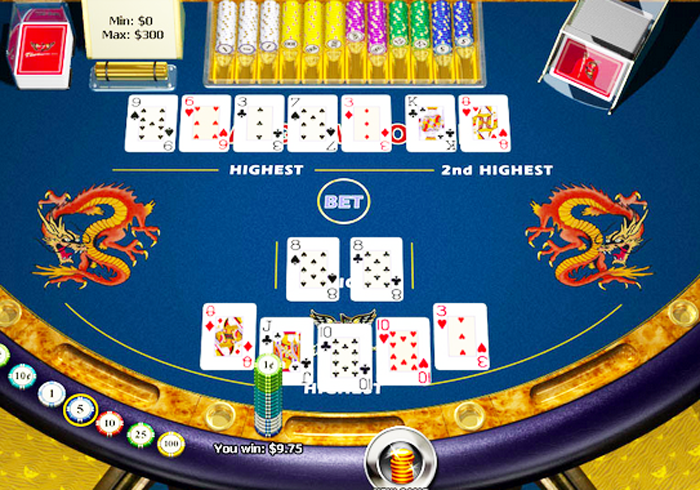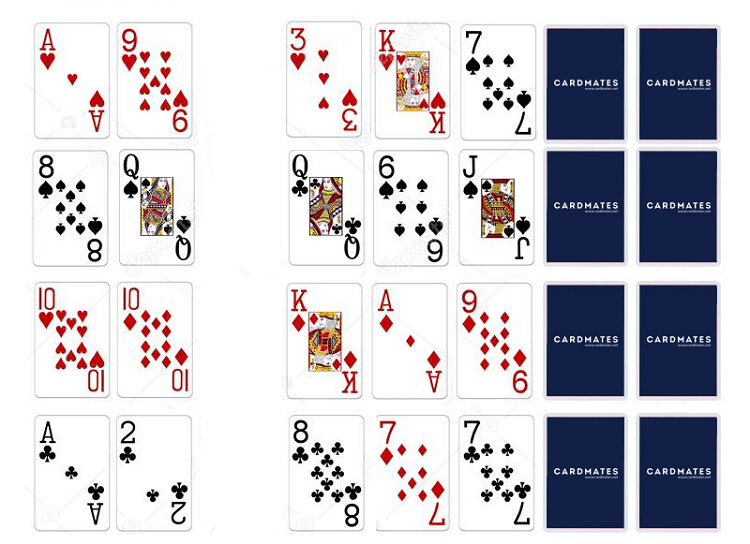What Is A Flush Draw In Texas Holdem
- You are on the flop with a pretty decent flush draw. In Texas Hold’Em there are five community cards dealt that you can build your hand off of with the two cards that are in your hand. Sometimes, the five community cards are all of hte same suit and they make a flush.
- PlayNow Flush Draw In Texas Holdem offers many of the world’s most popular casino games online. Baccarat.James Bond's favourite game is Baccarat and this Online Flush Draw In Texas Holdem Casino game definitely has a license to thrill! In Baccarat, the objective is to try to predict the winner in a game of closest to 9 between a ‘Player' and a ‘Banker.’.
- With a typical diamond flush draw (or any flush draw) we will have a total of 9 outs, as there will be 2 diamonds in our hand along with another 2 diamonds on the flop. There are a total of 13 diamonds in the deck, which means that 9 will be left in the deck that we will be trying to hit.
Texas Holdem Terms
An essential, and profitable, part of your Hold’em game should be betting your draws often when in position. Perhaps one of the best ways you can both get value on your draws, confuse your opponents, and take down a fair share of pots uncontested is to bet out on your straight and flush draws on the flop. There are 9 unknown cards left that could complete your flush so you have 9 outs out of 47 total unknown cards (52 cards in the deck – your 2 cards and – 3 more on the flop). This is how Texas Hold’em odds are calculated. Rounded to the nearest tenth of a percent, 9/47 = 19.1, or a 19.1% chance to hit your flush on the turn.
It is a very common situation to be in when playing in the game of Texas Holdem... having a potentially strong hand that needs another certain card to complete it. This is known as a ‘drawing’ hand, as you are drawing to a specific card or a specific type of card.
What's A Flush In Texas Holdem
These types of hands can be very difficult to play, especially if you are facing bets and raises and need to decide whether or not to call. However, by the end of this article you should be fully aware of how to play drawing hands, and know when to fold and when to call when facing a bet.
Flush draws and straight draws.
The most common drawing hands are flush draws and straight draws. When playing a drawing hand we have to evaluate how likely it is that we will complete our hand by the next card. We can do this by looking at the number of ‘outs’ that we have.
What are outs?
An ‘out’ is a card that will complete our hand. For example we have a diamond flush draw, an ‘out’ would be any diamond card. The more outs that we have, the better the chances are that we will complete our hand on the turn of the next card.
An out is simply a card left in the deck that will complete the hand that you are drawing to.

With a typical diamond flush draw (or any flush draw) we will have a total of 9 outs, as there will be 2 diamonds in our hand along with another 2 diamonds on the flop. There are a total of 13 diamonds in the deck, which means that 9 will be left in the deck that we will be trying to hit.
Similarly, we can work out the number of outs and likelihood of completing our hand for straight draws. There are however two different degrees of straight draw, the inside straight draw and the open-ended straight draw. An open ended straight draw is when we can hit either card on the ends of the straight to complete our hand.
Example of different straight draws.
If we are holding 7 8 on a board of As 5 6, we can either hit a 4 or a 9 to make our draw. Similarly, in an inside straight draw we are looking to hit one card in the middle of the straight to complete our hand. For example, if we again hold 7 8c but with a board of A 5 4, we have to catch a 6 to complete our straight.
An open-ended straight draw has 2 outs, whereas an inside straight draw has 1 out. This makes inside straight draws harder to complete.
Therefore, with an open ended straight draw we have 8 outs (fours 4s and four 9s), and with an inside straight draw we have 4 outs (four 6s), meaning that we are more likely to complete an open-ended straight draw on the turn of the next card rather than an inside straight draw.
How to work with the number of 'outs'.
As we already know, the more outs we have the better, because it improves our chances of making our hand with the more outs we have. The real value of these figures lies in when working out the specific odds of winning the hand. We can then use these odds to determine whether or not it is worth calling a certain size bet to try and complete our hand.
There will be a few numbers involved in the next part of this article, but bear with me, its not as difficult as it might appear on first impression!
Working out whether to call or fold.
We can use the number of outs to work out the odds of winning the hand by comparing it to the number of cards we don’t want that are left in the deck. If we have a flush draw on the flop, we have 9 outs to try and make our flush by the turn. There will be 47 cards left in the deck in total, of which 9 of these will make our hand, whilst the other 38 will not.
- 52 minus our holecards and the flop cards (5 in total) = 47.
- 9 cards of the same suit that we are chasing after.
- 38 are of a suit that will not complete our flush.
Now if we put these figures into a ratio of cards we want against cards we do, we get 38:9. If we simplify this ratio using basic mathematics, we get a new easier to use ratio of roughly 4:1. Now this figure means that for every 4 times we do not make our hand on the turn, 1 time we will, and that is all that we need to know for the time being.
Now we know that we know that the odds of making our hand (and thus winning the pot) are 4:1, we can use these odds to determine whether or not to call a bet or raise. When facing a bet, we have to compare the size of the bet to the size of the pot; this will give us our pot odds.
Using the odds when facing a bet.

Lets say for example our opponent bets $20 making the pot $100. We now must call $20 to try and win $100, but should we?

If we look at the ratio between the bet and the pot, we get 100:20, or put more simply 5:1. We are getting better odds from the pot (4:1) than we are from the cards, as we will be winning more for the number of times we make our hand. Therefore we should make the call. So as a general rule, if the pot odds are better (or bigger) than the odds we are getting to make our hand, we should call, as this will be the profitable play in the long run.
If the pot odds are bigger than the odds of completing your hand (based on the outs), you should call.
These odds and probabilities are constantly changing depending on the type of draw we have and the amount our opponent bets into the pot. Although it may look a little tedious and difficult at first, it is not too hard to grasp, especially if you use the system frequently. It may seem like more effort than it is worth to learn about the odds, but it is a great feeling when you always know whether or not to call or fold for draws, as you will never be unsure of what to do.
This article discussed the methods of playing draws passively, to try and see the next card as cheaply as possible. Read my article on playing drawing hands aggressively for alternative profitable methods of playing drawing hands.
Go back to the awesome Texas Hold'em Strategy.
Comments